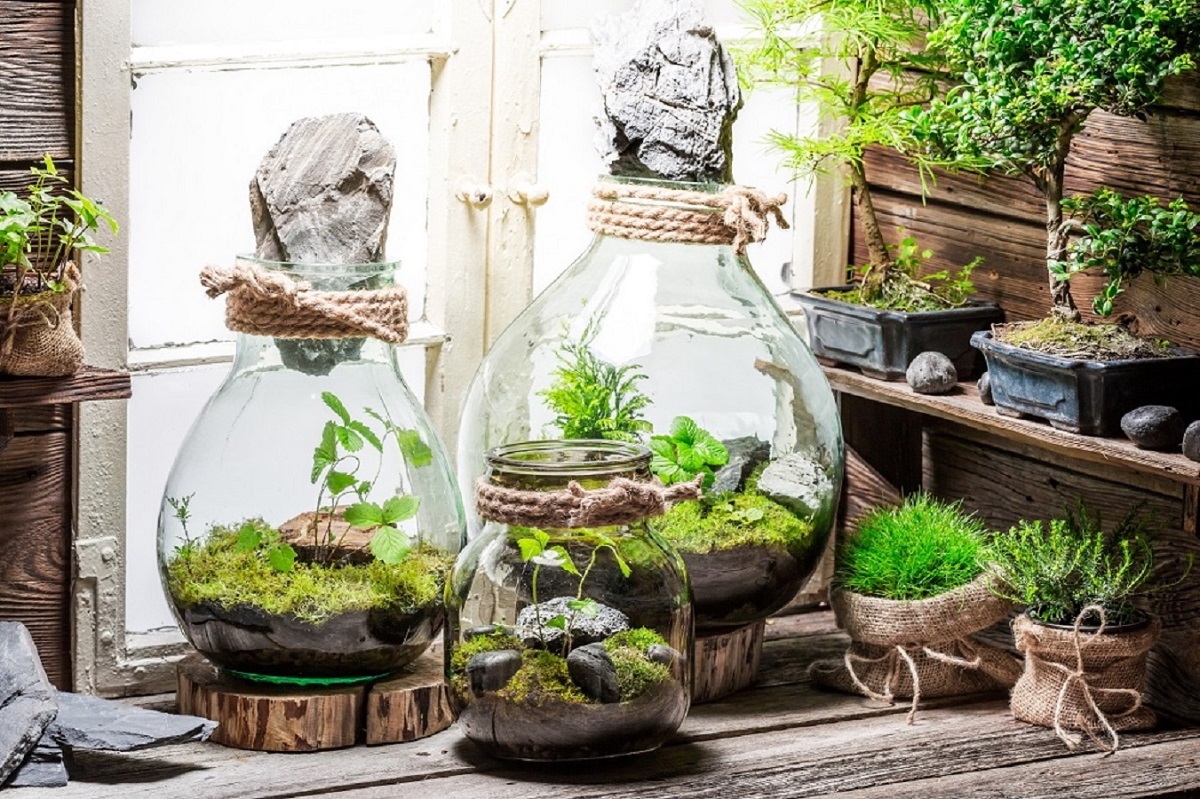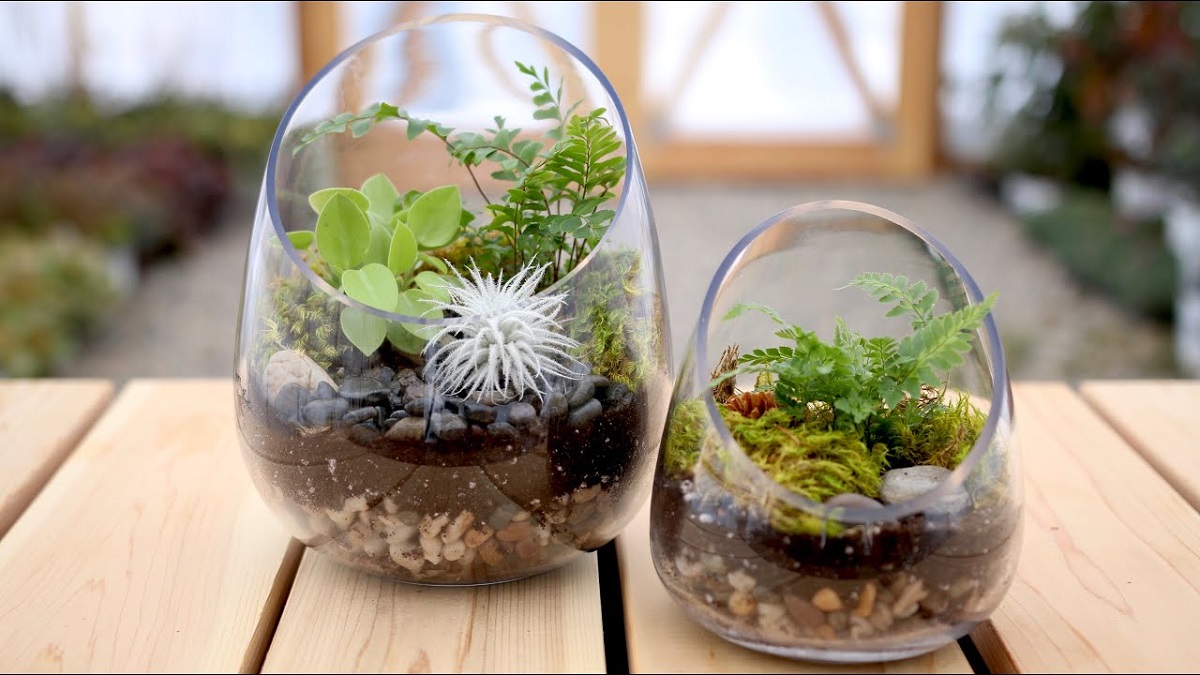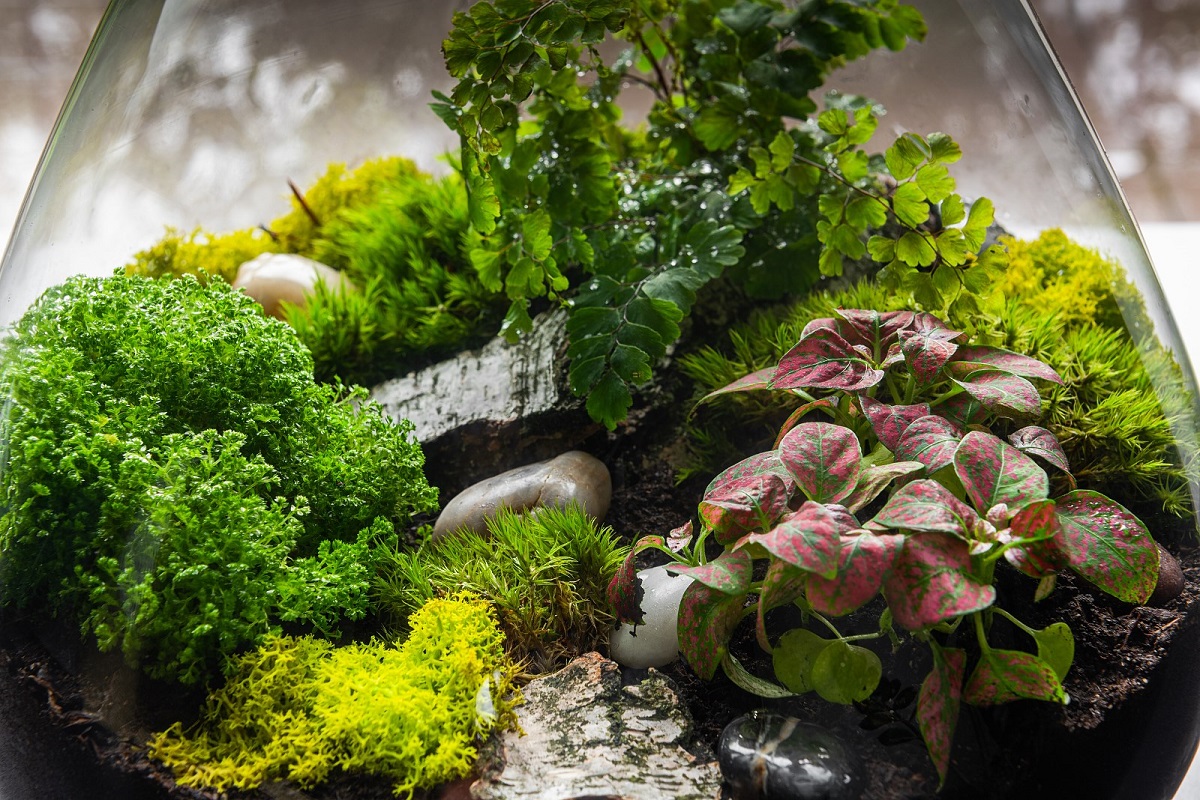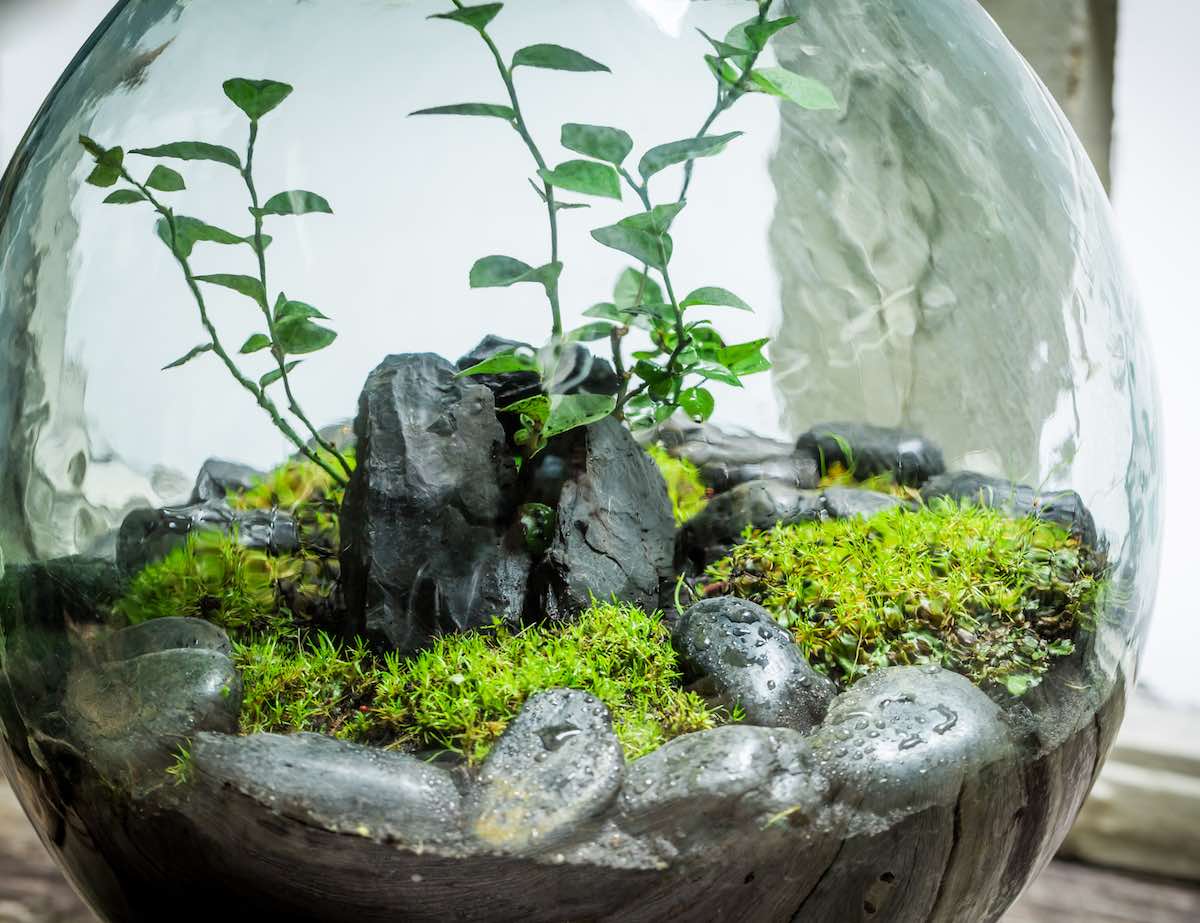
A terrarium is a collection of small decorative plants that grow in a closed environment. The container should be transparent and should have a large opening to allow access to the plants inside. Terrariums are miniature gardens that come in small, usually airtight containers, such as bottles and jars. Many people don't know how to make terrariums for your home decoration.
For this reason, we are going to dedicate this article to telling you how to make terrariums, what materials you need and what their characteristics are.
what are terrariums
A terrarium is a small closed space that tries to imitate an animal ecosystem. It can be used to decorate a space or create an ideal environment for reptiles, insects or plants. Through terrariums we can come into contact with organisms and understand how they behave, we can see how plants grow and keep them in good condition. Creating a terrarium takes time, but it's worth it.
The terrarium originally grew out of a botanical accident in Victorian London. As the Victorians explored their love of exotic plants and ferns, they quickly developed into a new trend known as "ferns." Today, glass containers are used for the same thing. They are perfect for those who love nature but live in cities without space for gardens and plants.
Understanding how they work is basically a lesson on the water cycle and the carbon cycle.. The heat from the sun causes moisture to evaporate from the plants and soil, which then condenses on the cooler interior surfaces of the terrarium. Like rain, the water falls back to the ground and the process starts all over again. Soil provides nutrients to plants, and just like the natural order of things, these nutrients are replenished as plants die and decompose in the soil.
the terrariums they are not an exact science and may take some trial and error to get right. Like the ecosystems of our world, they can be vulnerable to changes in light, temperature, and overzealous species.
types that exist

Today, glass containers come in all shapes and sizes (really, almost anything that is transparent can be used as a container). Generally speaking, the type of terrarium depends on the plants you plan to grow in it. tropical terrariums, succulent terrariums, etc. It can also be said that "open" and "closed" are types of glass containers.
Closed terrariums are of the classic type. Sealing the terrarium and creating a closed system is what perpetuates the ecosystem… and allows us to do all the fun things. After all, Trapping moisture in a terrarium is what allowed the Victorians to grow their interesting tropical plants.
Open terrariums may lose many of the important features and functions of true terrariums, but they still have their place. They are better for plants that do not need a lot of water.
How to make a terrarium step by step

The described procedure is useful for horizontal or vertical terrariums. If you want to make one, you will need the following materials:
- Glass jars, reuse one, you definitely have a lot on hand.
- Scotch tape.
- small stone
- Activated carbon.
- Medium sized stones to decorate.
- Plant the hotbed. You should choose plants that are small enough for the terrarium. If it grows too large, it can make the terrarium look small. Uses: Tillandsia stricta, Pilea implicita, Cyathus bivittatus, Fittonia verschaffeltii var. Argyoneura and various succulents. All of these items are readily available, using anything that can be recycled.
Steps to make the terrarium:
- Clean pots and stones to prevent fungal growth.
- Once dry, place masking tape over the opening of the pot to prevent soil from escaping. If you decide to make it vertical, you can skip this step.
- Place a thin layer of activated carbon. It will keep the water fresh and will combat any bacterial growth in the terrarium.
- Small pebbles are placed in the bottom of the pot for drainage.
- Place the first layer of soil, trying to cover the entire terrarium.
- Place the seedlings in whatever arrangement we think works best. Those that require high humidity are recommended.
- Once the plants are placed, their roots are covered with soil. You can assess if you put moss (do not remove it from the field) since it is a soil conditioner and can beautify the terrarium. Don't get moss from nature.
- You can complete the decoration by placing stones of different sizes.
- Water two or three times with a spray bottle, no more. This will nourish the plant, which will recycle it through respiration. After this step, the glass container can be closed.
- You can place a decorative figure to accentuate the beauty of your creations.
Maintenance
It is important to check the humidity level. The plants are acclimatizing during the first days, but after a week you should remove the excess plants so they don't die. You can place a cloth on the glass to remove it. Fungi can also appear if there is too much moisture.
When summer comes, avoid placing it in direct sunlight. Glass absorbs heat, which can greatly increase the temperature and kill plants.
how to make terrariums for succulents
Terrariums are frequently made for succulent plants. Therefore, we are going to give some tips to learn how to make terrariums for succulents:
- Clean the glass containers of your choice with water and detergent.
- Place the first layer of stones mixed with charcoal on the bottom. This will be the drainage layer.
- Put a second layer of moss.
- On top of the moss, put fertilized soil and tamp it down.
- In this layer, you can place decorative stones.
- Choose where you would place the succulents and, with the help of a spoon, dig a hole to bury the plants.
- Place the succulents in the holes you made earlier.
- Water the soil until the bottom stones are moist.
As you can see, terrariums can be quite interesting if organized properly. I hope that with this information you can learn more about how to make terrariums and their characteristics.
